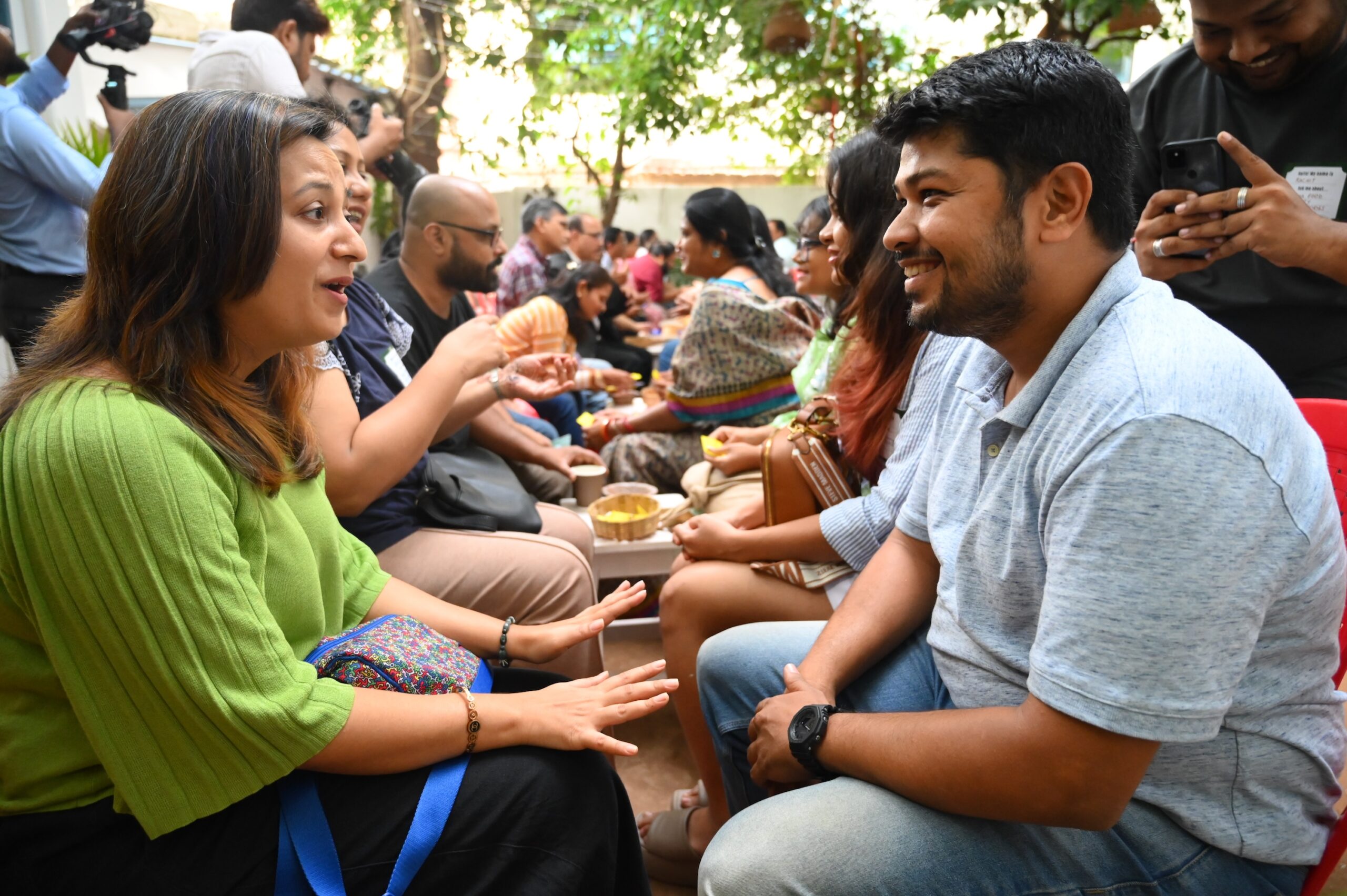

On a humid day in December, millet lovers from Bhubaneswar gathered together in the beautifully lit backyard of Cafe 16, Satyanagar. Odisha has a storied history of cultivating and consuming millets, and this immersive meetup invited everyone, attendees as well as The Locavore team, to delve into this complex landscape, and explore its continued significance for our kitchens, farmlands, and communities.
It aimed to ignite discussions, inspire change, and build a community of advocates to enable eating practices that are good for both—people and the planet.
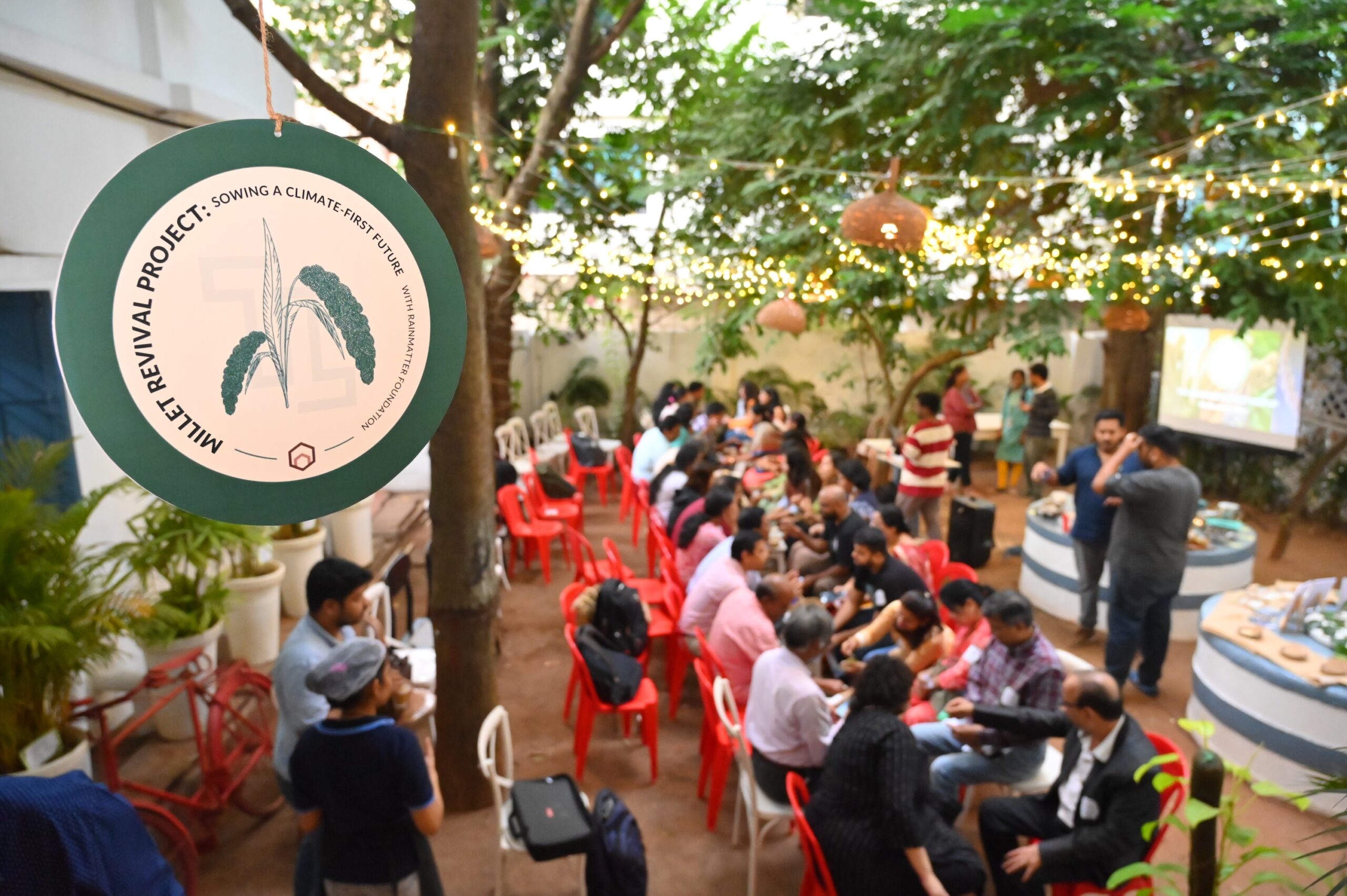
Cafe 16 (backyard), Satyanagar, a beautiful cafe which doubles as a library where they host a number of cultural events. Photo by Team Locavore.
Organised as a part of a cluster of weekend events for the Millet Revival Project, in association with Rainmatter Foundation, the meetup spanned an entire evening, with stakeholders across the millet value chain participating and sharing their insights. We were especially inspired by the Odisha Millet Mission, a beacon across the country for how multiple stakeholders including state governments, not for profit agencies, grassroots organisations, and producers can work together to popularise millets and reintroduce them into our food systems in an equitable and accessible way.
Preparations for the meetup started early with the setting up of our Millet Experience Grove, which displayed millets like kodo, foxtail, sorghum, barnyard and many more from our producer partners across the country. People could walk around the grove and touch, smell, and feel the millets in this interactive display. And at our Millet Bumble Meetup, people could read up about millets, and tell us which ones they would swipe right on and why! Foxtail is foxy, folks! And who wouldn’t say go to kodo?
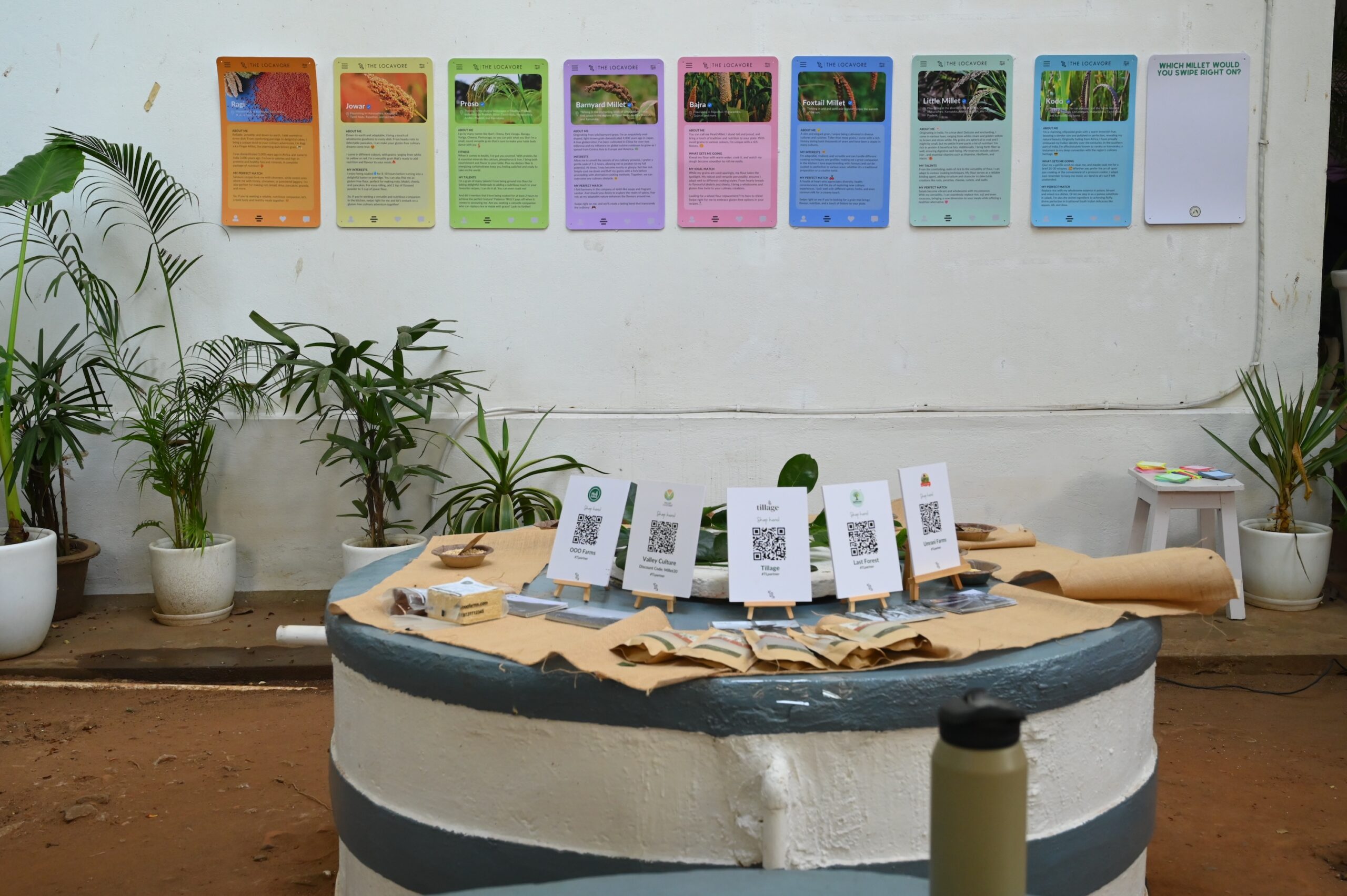
Our Millet Experiential Grove and Bumble Wall. Photo by Team Locavore.
We all then played The Locavore Shuffle. Going beyond perfunctory introductions, we asked each other questions about a favourite festive food, a dish we have prepared that lingers in our memory, whether we found millets hard to cook with, what millet recipes we have tried, and what dish, in our mind, represented our own culture best.
It was an incredible exchange of food history, culture, and memory. With just a little bit of shuffling, we learnt so much!
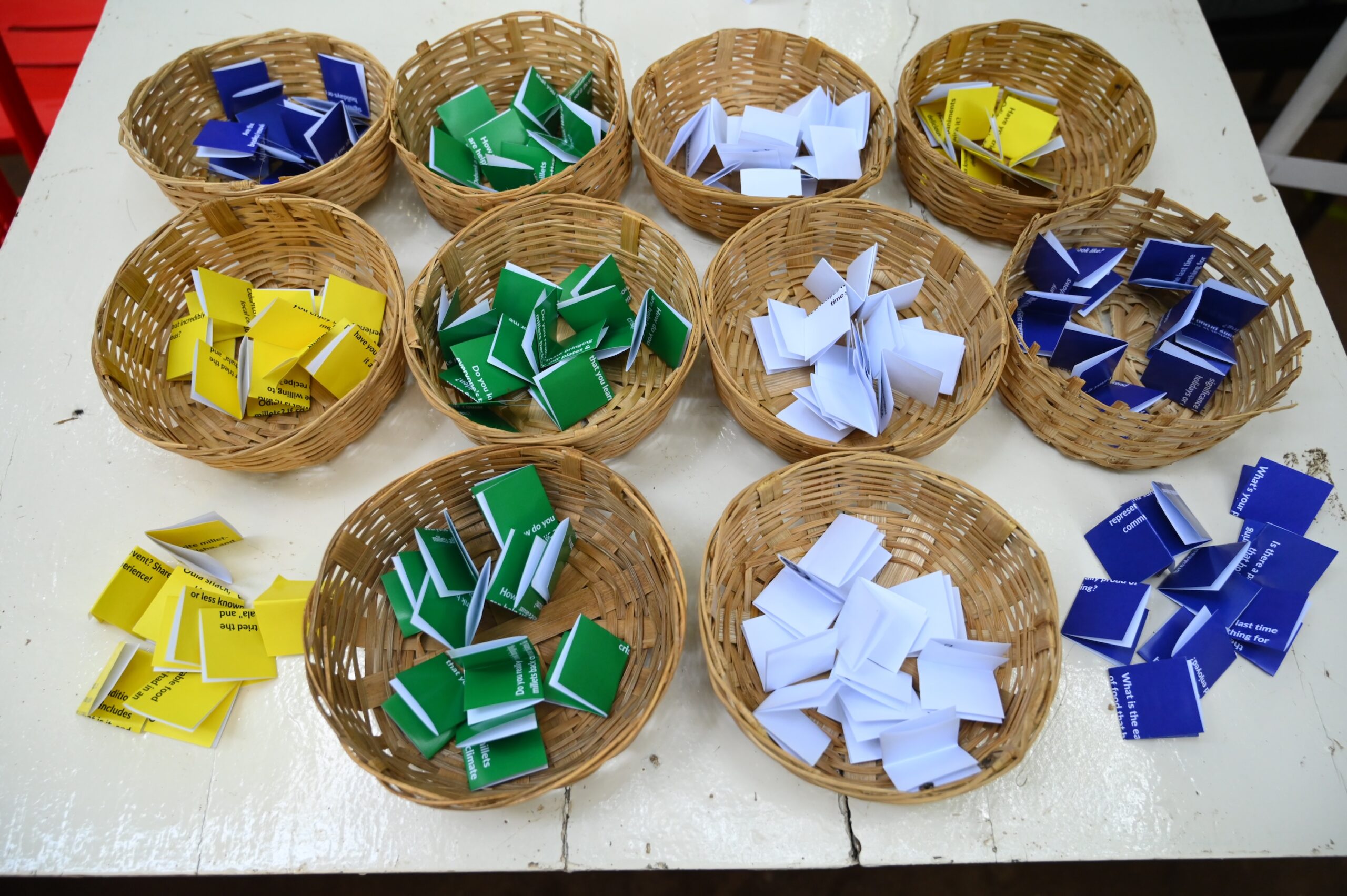
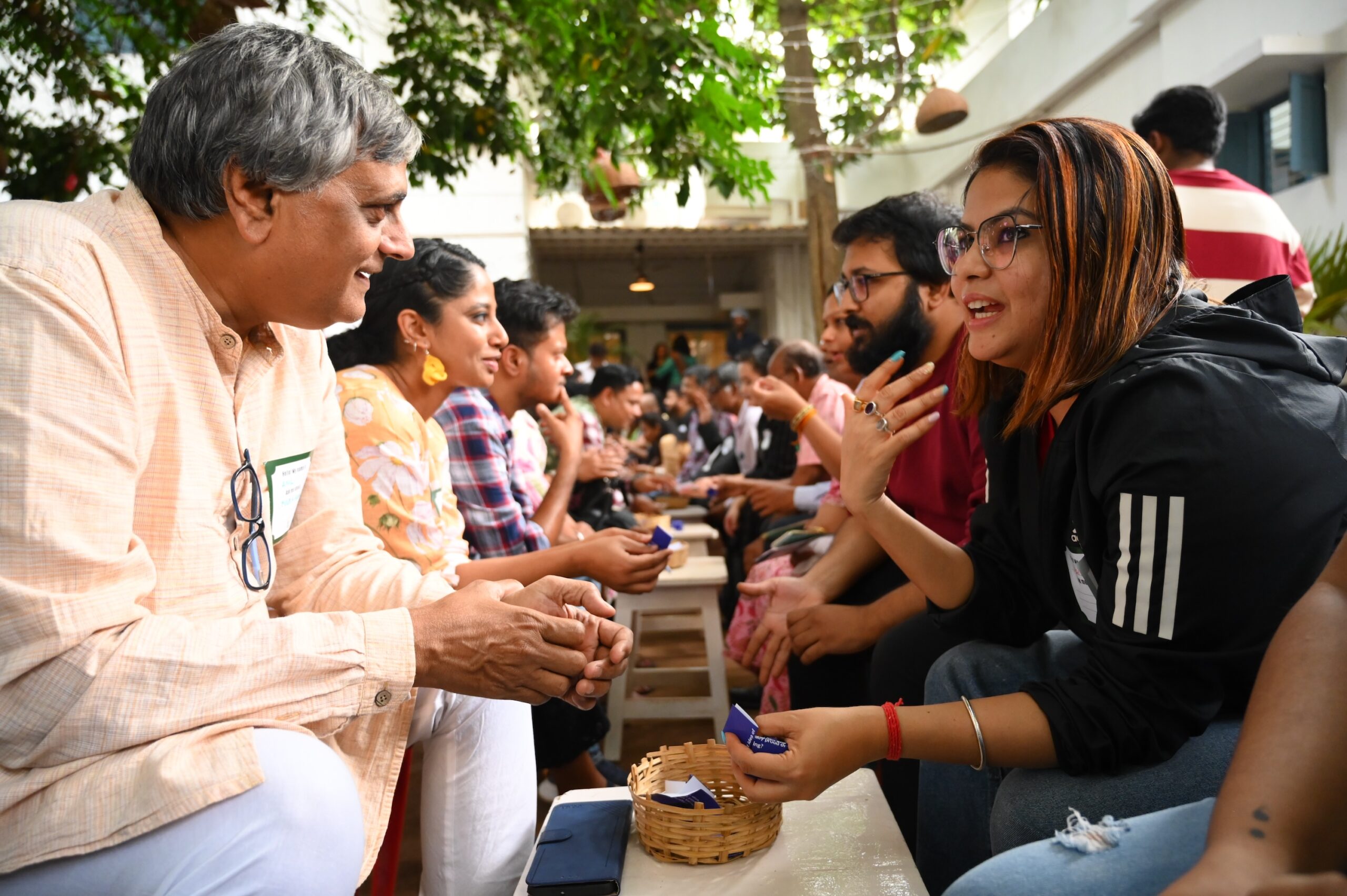
Guest speakers, The Locavore team, and attendees all got to know each other a little better during the TL Shuffle. Photos by Team Locavore.
We had a lineup of five speakers next, each an expert around a certain aspect of millets.
Rama Chandra Tosh, regional coordinator at the Watershed Support Services and Activities Network (WASSAN), took us through the work of the Odisha Millet Mission to support the cultivation, procurement, and distribution of millets across the state. He told listeners that the indigenous tribes of Odisha are the true custodians of these traditional varieties of seeds, and it is only because of their preservation efforts that many of these varieties still exist today.
Anil Kumar Dhir, co-convenor of INTACH Odisha, lamented that the very communities who were custodians of millet seeds and who were traditionally consuming them, growing them, had rituals surrounding them, are no longer doing so. He said this was down to a few reasons—cheap and ample access to rice through the public distribution system, the lack of interest in younger generations to eat them, as well as the difficulty involved in processing millets.
Sanaya Bodhanwalla, the CEO for Marketing and F&B at Hotel Barjoris Banjara in Balasore, took us through some of the special millet events that her hotel had curated that were met with great success, including a really interesting tasting platter they tested called the “Millet Palate”.
Debjani Das of the Trishakti Federation of Mission Shakti Department, spoke about how OMM has played a crucial role in improving the lives of women through Mission Shakti, and given them a platform to showcase their entrepreneurial skills through the use of millets. The Millet Shakti brand is being driven by women Self Help Groups, one of which Debjani heads.
Then, Pradeep Kumar Rath, from the Scheduled Castes and Scheduled Tribes Research and Training Institute, showed us a film about millet cooking practices in Odisha’s tribal population, and how millets hold a special place in these communities as a way of providing nourishment.
Tapas Chandra Ray, author and millet consultant, was our last speaker for the night. He helped us understand how to think of millets as a business and what the challenge and scope within this landscape is. He also took us through different ways of adding value to millets to make a business profitable, while ensuring better prices for growers.
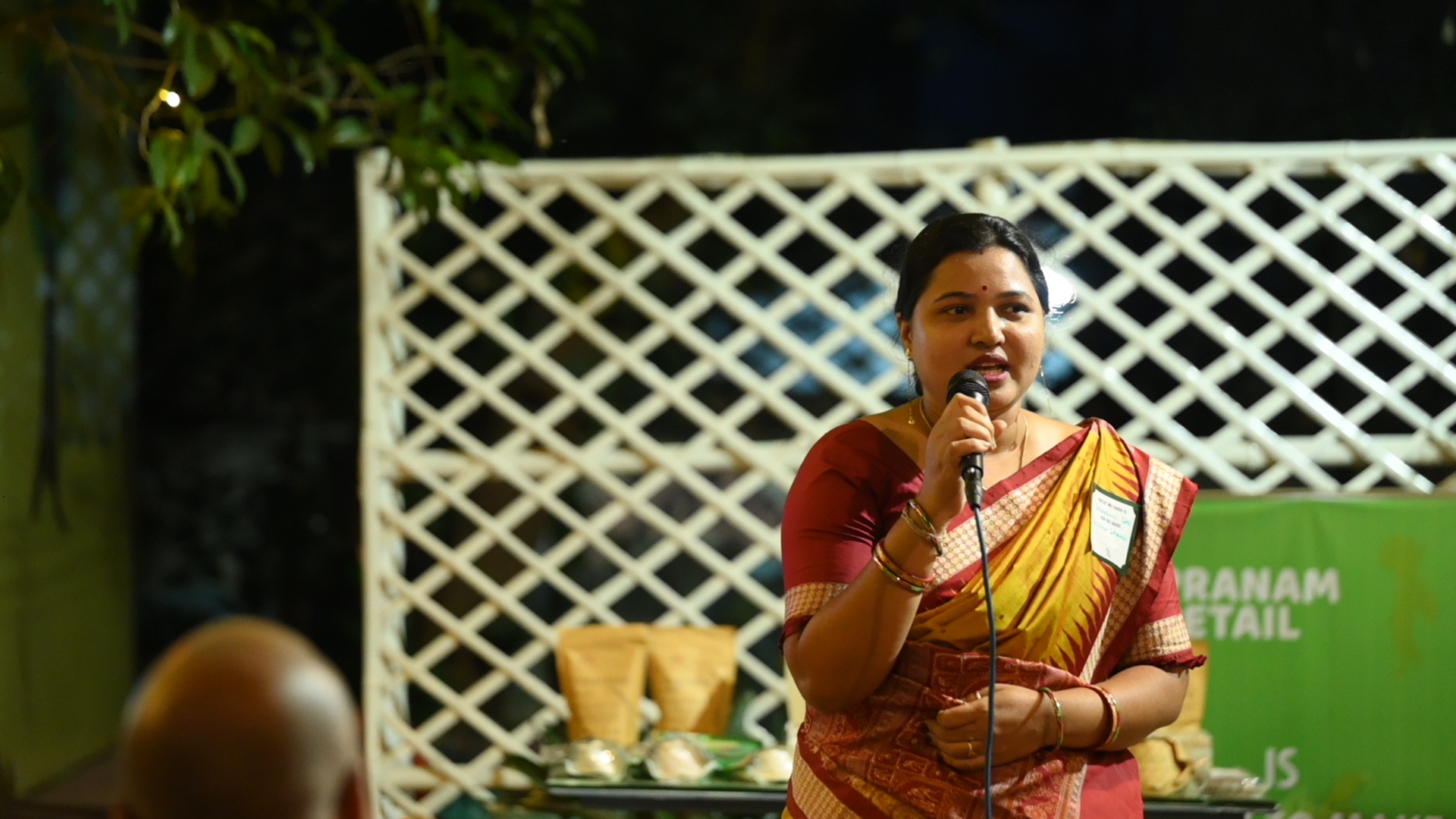
Our lineup of speakers at the event gave us the opportunity to deeply think about the many successes and issues around growing and consuming millets. Photo by Team Locavore.
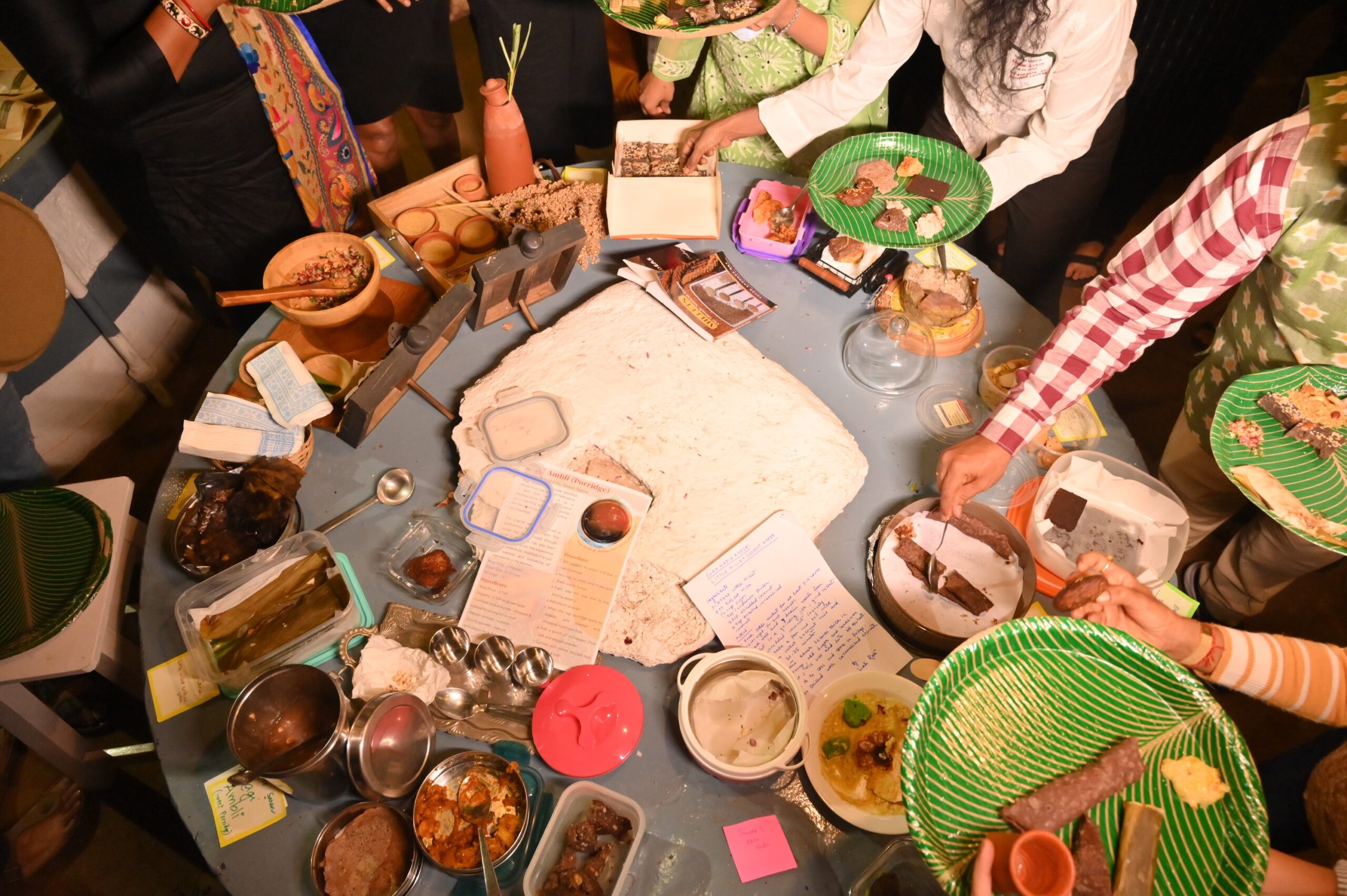
The millet inspired spread at our Bhubaneswar potluck. Photo by Team Locavore.
After all the talks, it was time to get together and eat at our community potluck!
The spread featured millets in all their glory, with both traditional and experimental dishes on display. To name just a few—Mandia chicken baos, a St. Sebastian burnt Basque chenna poda with foxtail millet, ragi barfi, a foxtail millet salad with a lemon and olive oil dressing, little millet enduri pithas, millet zom kom, foxtail millet brownies, ragi ambli, little millet coconut kheer, jowar and ragi wadas, and ragi podapithas. Sweet, savoury, spicy, healthy, melt in the mouth, and crunchy—we had it all! We knew, of course, that millets could be delicious, but to experience them in all their variety was a truly incredible experience.
After the community meal, guests, participants, and organisers shared recipes, and their experiences of consuming millets with each other. Conversations also revolved around a desire to sustain the grains as sacred heritage crops, and the importance of working towards this.

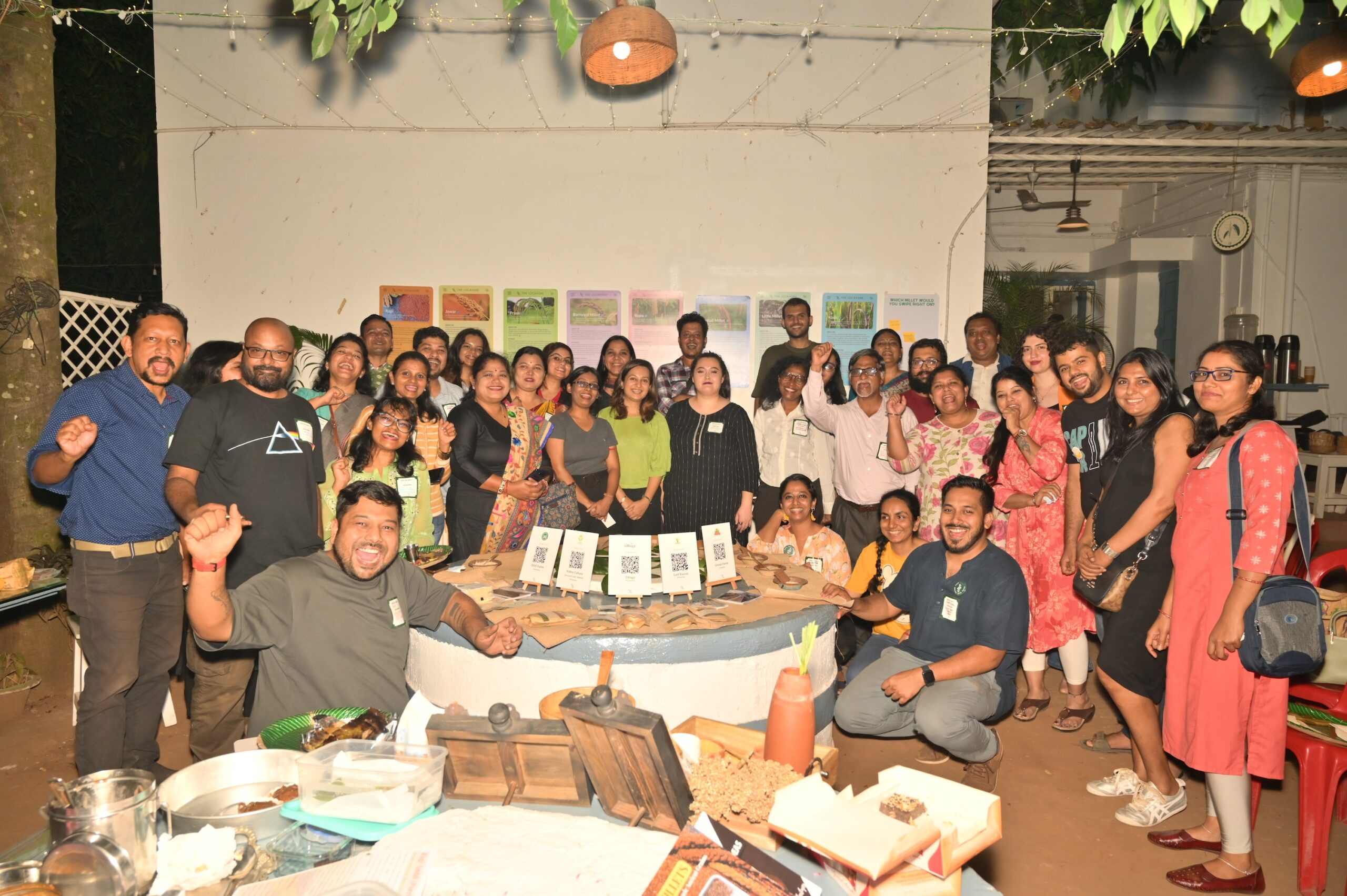
Guests and organisers alike shared a wish to consume and work more closely with millets. Photo by Team Locavore.
At The Locavore, we love planning and executing events that highlight India’s diverse local foods, celebrating community, sustainability, and cultural heritage. Our events feature engaging workshops, discussions, immersive experiences and other formats that connect you to India’s rich food culture. Interested in collaborating or having us organise an event? Reach out at connect@thelocavore.in.
